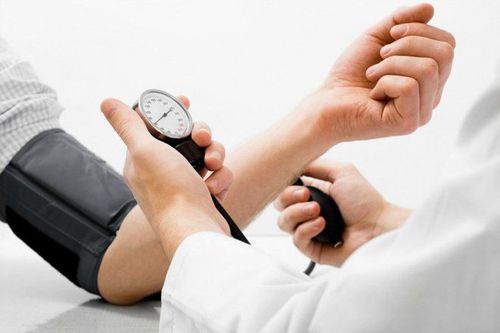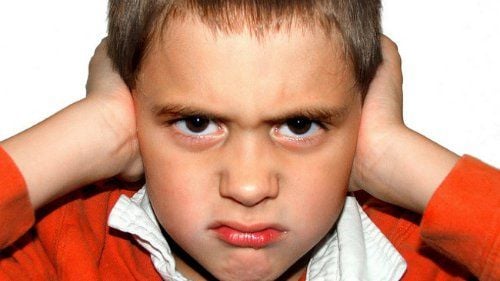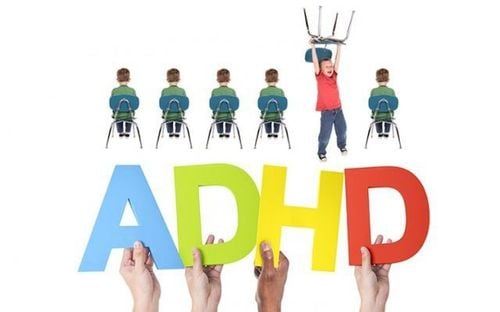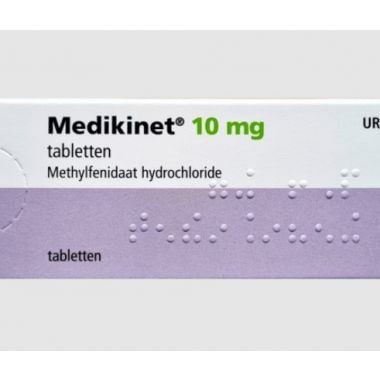This is an automatically translated article.
Attention Deficit Hyperactivity Disorder (ADHD) is a complex neurodevelopmental disorder that can affect a person's ability to function in many different aspects of life. From things at home to, at school or even photos to the person's current job.
What is Attention Deficit Hyperactivity Disorder?
Attention-deficit hyperactivity disorder (ADHD) is an abnormal neurodevelopmental condition that causes a person to have a loss or decrease in the ability to pay attention, be more hyperactive than usual, or often a combination of both. This condition can cause a lot of problems in the patient's life such as the ability to study, work, relationships with others...
Although ADHD can cause symptoms very easily. However, the symptoms in children and adults are different and sometimes difficult to recognize or confuse.
Statistically, ADHD is usually diagnosed in children when they are in their teens, with the average age at diagnosis being 7 years old. Adults with ADHD may exhibit symptoms early in life that go unnoticed, leading to a later diagnosis.
Early diagnosis affects the treatment and quality of life of the patient. Therefore, it is important to recognize the symptoms in each person.
Signs of Attention Deficit Hyperactivity Disorder
Depending on the subject of the disease, there are different symptoms of the disease.
2.1 Signs of Attention Deficit Hyperactivity Disorder in Children
ADHD mainly causes symptoms related to inattention, impulsive hyperactivity or often a combination of both.
In a child or toddler with ADHD it can lead to signs such as:
The child has difficulty concentrating on activities and is often easily distracted Periods of low attention during play or do homework at school. Children are often restless, tossing or difficult to sit still. Children constantly need to move or often run around. Children tend to engage in activities that cause noise or disturbance to those around them. Children talk too much and out of control, interrupting other people's work. 2.2 Symptoms of Attention Deficit Hyperactivity Disorder in Adolescents
As children with ADHD get older, the symptoms they experience may change from their previous episodes. In some cases, certain symptoms experienced in childhood may become less frequent in adolescence, while emerging symptoms may arise. In adolescents with ADHD, symptoms other than infancy may appear that may include:
The child has difficulty concentrating on schoolwork or performing other tasks. Frequently making mistakes while working. Difficulty completing tasks, especially schoolwork or housework. Having difficulty and feeling troubled with work organization and time management. Frequently forgetting different items or losing personal items. Regularly avoid tasks that require mental focus. Or experience feelings of disappointment and are emotionally sensitive. Difficulty building and navigating well social and family relationships Increased conflict with parents due to ADHD symptoms affecting family life Important to understand at this age That is, although these symptoms of inattention and hyperactivity can sometimes make you think that adolescents with this disorder seem very young and immature, it is a sign of the disease and it is completely unresolved. It has nothing to do with the child's maturity level.
2.3 Signs of Attention Deficit Hyperactivity Disorder in Adults
Although most people with ADHD are diagnosed during childhood, sometimes the signs and symptoms of this condition can be subtle. and easily overlooked or misunderstood.
In adults, symptoms of ADHD may appear different from symptoms in adolescence or childhood, due to the different responsibilities that someone may have as an adult in adults. According to research, symptoms adults may experience include:
Difficulty learning during college or work. Difficulty getting through classes or getting work done. It is possible that adults have problems with self-esteem such as high self-esteem and overall mental health problems. There is a risk of substance abuse, especially with alcohol. Difficulty in relationships with partners, family or co-workers Due to their inattention, accidents or injuries are frequent. 2.4 Signs of Attention Deficit Hyperactivity Disorder in Women and Girls
Although ADHD can affect people of all ages and genders, research has found that ADHD is four times more common in men. times that of women.
The difference in attention deficit hyperactivity disorder between male and female genders is not based solely on prevalence. In fact, ADHD can manifest differently in women than in men, which may contribute to the lower rates of being diagnosed in women and girls.
According to research, women often experience a combination of both inattention and hyperactivity, but many of the symptoms are milder than men, especially signs of impulsivity.
The notable differences of ADHD in women and girls are:
More difficulty with mood swings and emotional regulation. There is usually an increased risk of sexually transmitted infections (STIs) and a high risk of unwanted pregnancy. Having more problems with studying and affecting self-esteem. Additionally, ADHD symptoms in women often get worse with age and during transitional periods, such as puberty and adulthood. Hormonal changes, such as those that occur with the onset of menstruation, pregnancy, or menopause, can also cause an increase or worsening of ADHD symptoms.
What to do when you have attention deficit hyperactivity disorder?
When children have difficulty concentrating, inattentive or exhibit more hyperactivity than children of the same age. Parents should take their children to medical facilities for early examination and diagnosis.
If left untreated, ADHD can make it difficult to function at your best in family life, at work or school, or even in other relationships.
Thus receiving treatment improves the quality of life and surrounding relationships. If you or your child is diagnosed with ADHD, the following treatment options may be offered:
Behavioral therapy: This is one of the most beneficial types of therapy for patients with ADHD. attention deficit hyperactivity disorder (ADHD), especially for children and adolescents, as therapy helps identify the thoughts, feelings, and behaviors that are having the most impact. In young children with ADHD, behavioral therapies that are focused on parental education, classroom management, and peer interventions are most effective. In adolescents and adults, a type of behavioral therapy called cognitive-behavioral therapy (CBT) may also be helpful. Medications: Medications can be used alone or often in combination with behavioral therapy to reduce symptoms of ADHD in both children and adults. Lifestyle changes: Making lifestyle changes involving strategies can help you overcome the inattention, hyperactivity, and impulsivity that this condition causes. This includes tailoring study skills, creating organizational skills, and implementing time management strategies. Get support from a variety of sources such as family, friends, community. You can research communities or organizations related to the disease to be able to receive accurate information. Accurately understanding your illness and getting the right advice from experts is the key to overcoming your illness and keeping it under control. For children with this condition, they need to receive the attention of their parents and support from those around them so that the disease can be well controlled. In children, ADHD symptoms can sometimes be confusing to parents and caregivers. Leads to late treatment and can cause symptoms that significantly interfere with daily functioning. Therefore, you need to understand the early symptoms of the disease and get early diagnosis and treatment to help improve your quality of life.
Please dial HOTLINE for more information or register for an appointment HERE. Download MyVinmec app to make appointments faster and to manage your bookings easily.
Reference source: healthline













